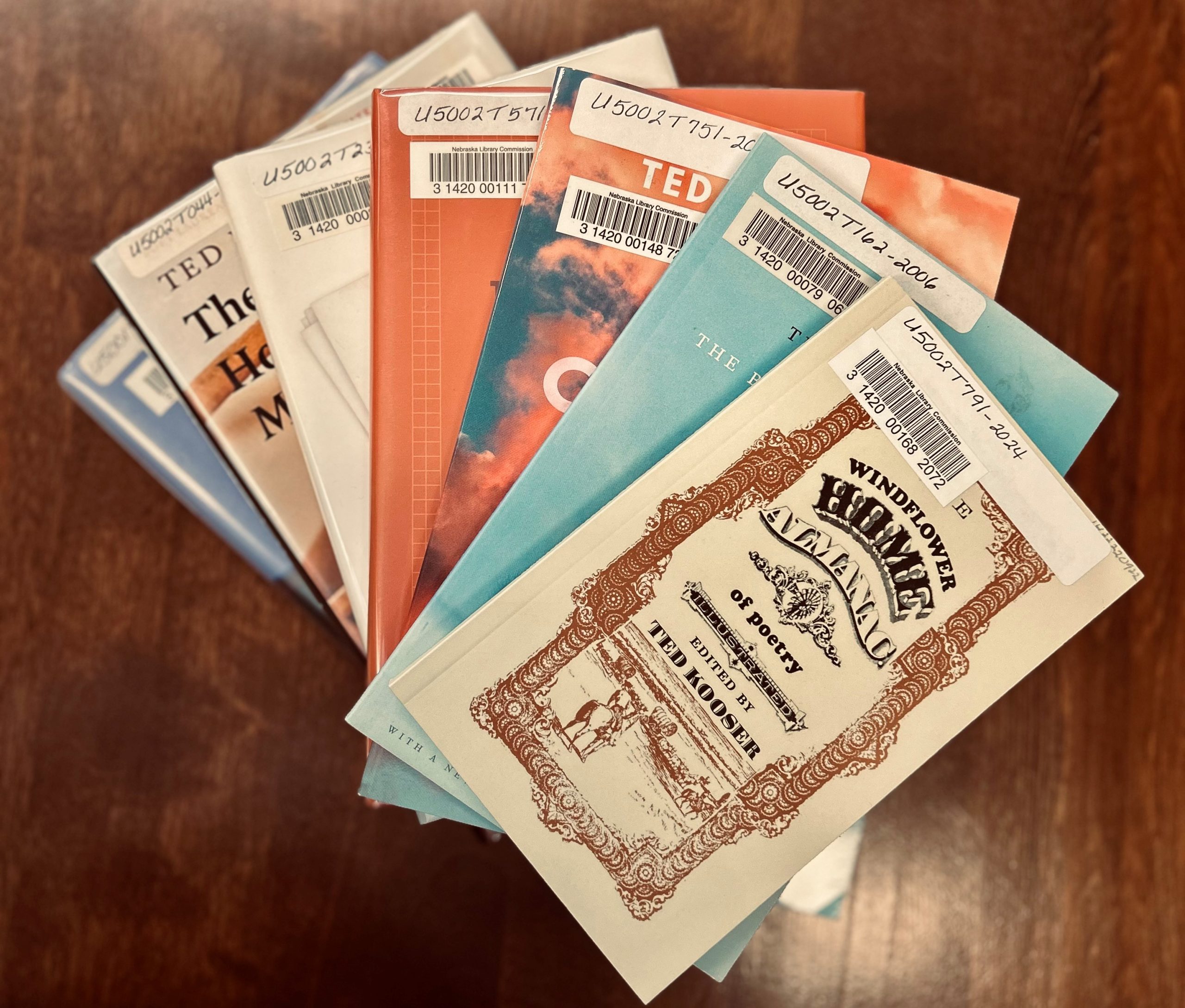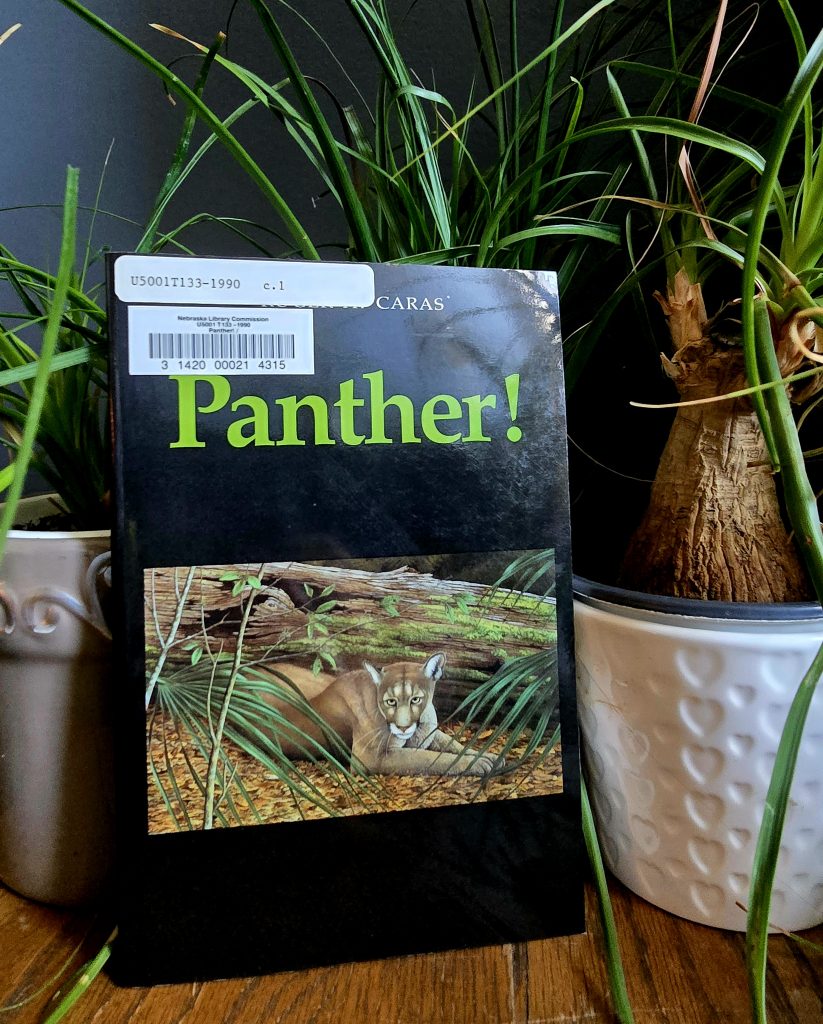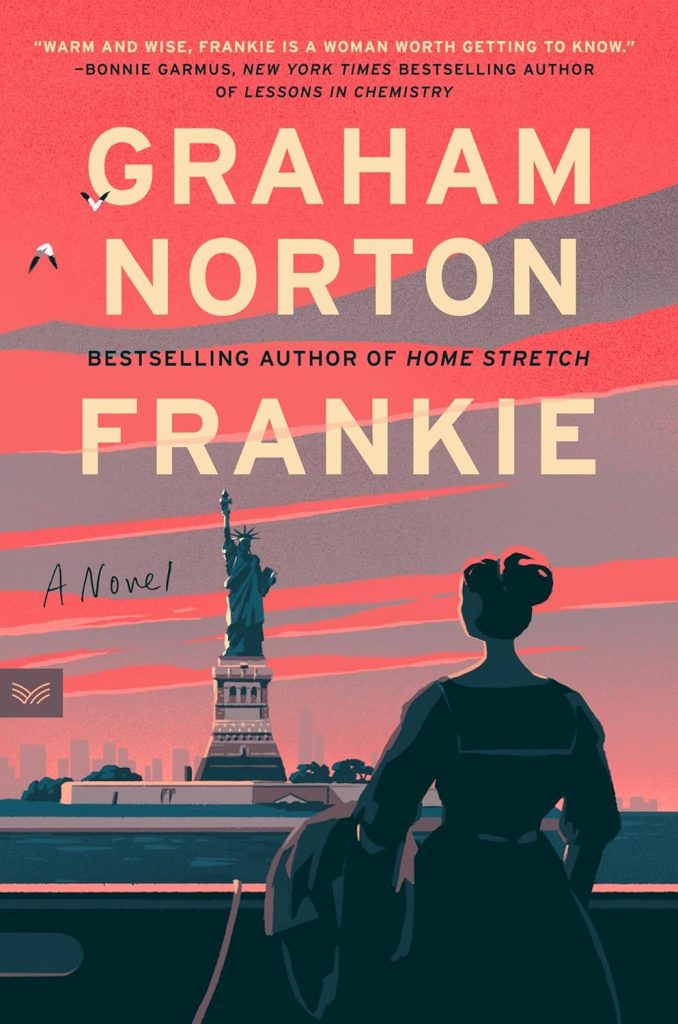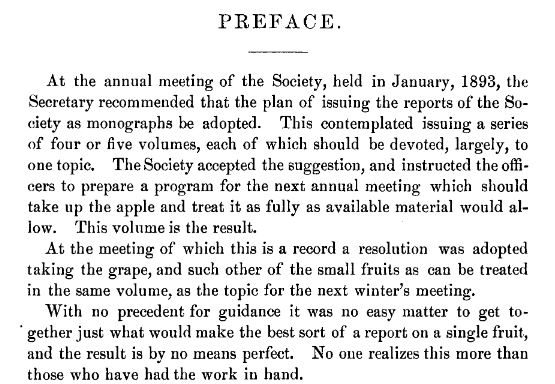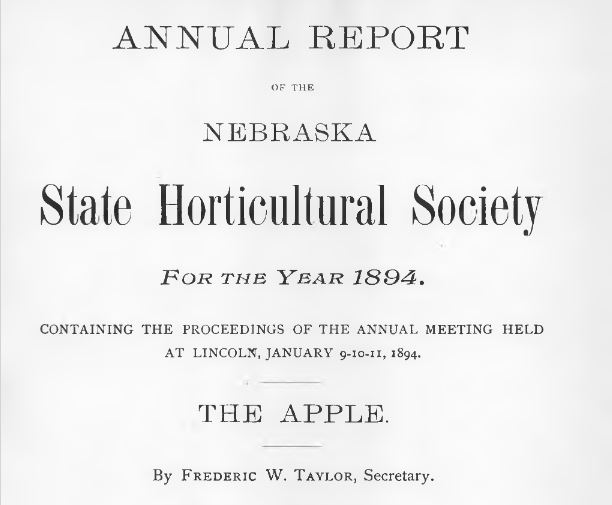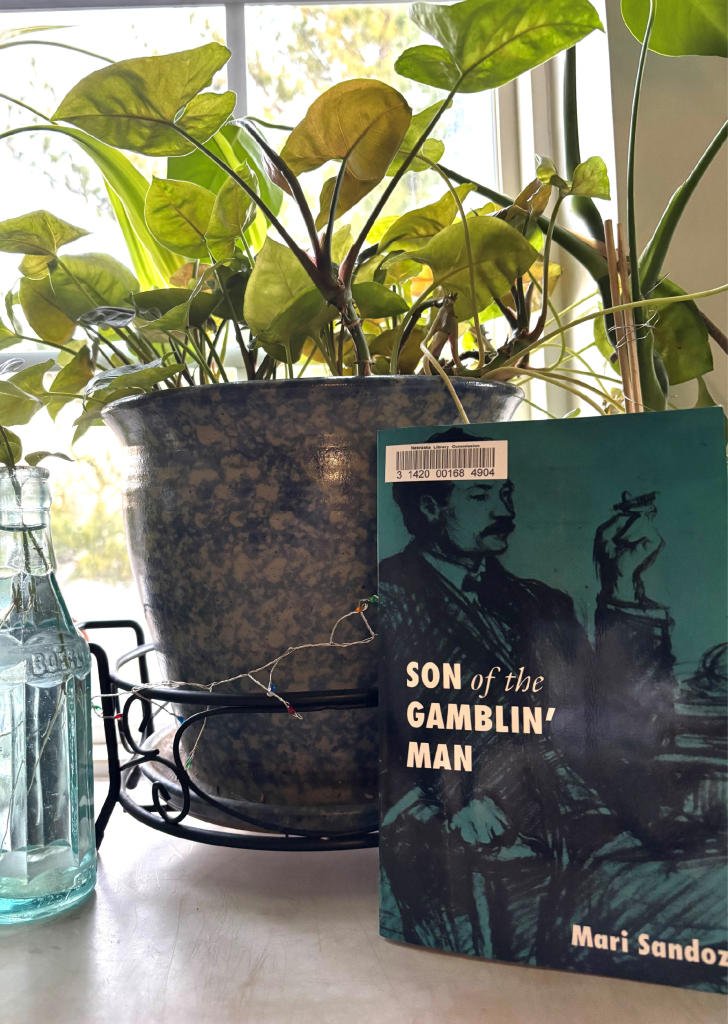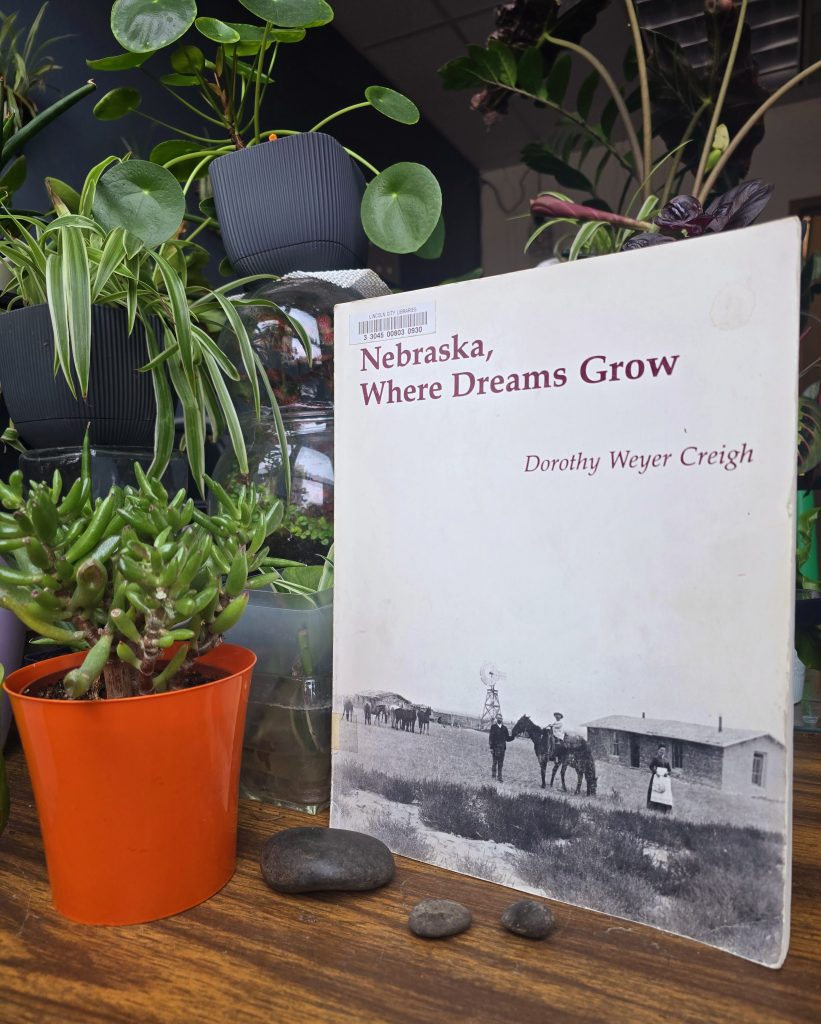Search the Blog
Categories
- Books & Reading
- Broadband Buzz
- Census
- Education & Training
- Friday Reads
- General
- Grants
- Information Resources
- Library Management
- Nebraska Center for the Book
- Nebraska Libraries on the Web
- Nebraska Memories
- Now hiring @ your library
- Preservation
- Pretty Sweet Tech
- Programming
- Public Library Boards of Trustees
- Public Relations
- Talking Book & Braille Service (TBBS)
- Technology
- Uncategorized
- What's Up Doc / Govdocs
- Youth Services
Archives
Subscribe
Category Archives: General
Friday Reads: A Lost Lady, by Willa Cather
While I was enjoying some Barbara Stanwyck films on Turner Classic Movies (star of the month for March 2025), I saw something that surprised me—a mention of Willa Cather in the opening credits for A Lost Lady (Warner Bros., 1934). I’d heard of the 1923 book that Willa Cather wrote with that title, but I’d assumed this was a coincidence. I don’t know as much about Willa Cather as many other Nebraskans might (who might also be reading this right now—hello everyone, in the state and elsewhere, who has a Google alert for Willa Cather! You are a devoted bunch!), but I didn’t remember seeing Cather’s name associated with a relatively contemporaneous movie before.
(This 1934 movie was the second attempt to bring the hit novel to the screen. The first try was in 1924, directed by Harry Beaumont and starring Irene Rich—but don’t go looking for that version, because according to IMDb and others, there are no existing prints of that 1924 movie—it’s considered as “lost” as its title character.)
According to film critics in 1934, this second attempt to bring the book to the screen was a disappointment, despite the popular cast. The review in the New York Times suggested changing the title and removing Cather’s name from the credits, and that the film lacked “the haunting beauty of the book.” The 1934 movie was such a disappointment to Cather that it is said to be the reason there were no more movies made of her works in her lifetime.
After looking into the adaptation history, I had to pick up the book. Since A Lost Lady is old enough (1923) to be in the public domain, there are many versions online for reading or listening, as well as many reprints and editions in physical form. The Willa Cather Archive at UNL, for one, has it (and many related materials worth looking at) online.
To be fair, it would have been difficult to make A Lost Lady into a successful movie that stayed faithful to the text. The book opens with setting the physical and social scene in a way that would have been a challenge with the film technology at the time. That is soon followed, in the book, by a scene of animal cruelty and body horror that could not have made it onto the screen at the time either, for other reasons. These limitations might explain why the filmmakers re-ordered the narrative events of the text, but that re-ordering takes away an important “reveal” of some character development. Also, Nebraska, as a place, is missing from the movie entirely.
Another challenge for the film is the casting. If someone read a synopsis of the book but didn’t actually read the book, it would sound great to cast Hayes-Code-inspiring, 1930s-era Barbara Stanwyck, who excelled in playing flawed, charismatic women who would do what it takes to survive. This is what her studio and her fans would want from her performance, and they’d be rooting for her through stumbles and successes—and this is not quite what the book is about.
A Lost Lady (the book) is about a young man, Niel Herbert, who is enthralled with, and eventually disillusioned by, the charming Marian Forrester, who indeed does what it takes to survive, and Niel does not like the choices Marian makes. The book succeeds where the movie flounders, because we see Marian’s do-what-it-takes choices through the gaze of Niel—and Niel is the person with whom Cather intends the reader to identify—not Marian. Also, in the movie, Niel is the same age as Marian, which completely changes their dynamic.
This difference gives nuance to the book, while the movie becomes an ineffective morality play (with a very different ending). One could argue the first half of the movie is more fair to Marian than the book ever is (and then falls apart in a frustrating fashion that I had to re-wind twice so make sure I wasn’t missing something), but, to be fair, the book is never really trying to make excuses for Marian. It’s up to the reader to complete any circuit of sympathy and understanding for the choices she feels she must make. I think the reader can handle this responsibility better than Niel does.
Reviews of the book see symbolism that don’t follow through to the film adaptation. In the book, the reader can see how Niel might represent the American westerner of the era, who’s been promised a promise—a future that’s as bright as one wants it to be. And the Marian of the book might represent the American West—charming, wild, just out of reach, something the protagonist could fall in love with the idea of—but which can’t live up to unreasonable expectations projected upon it, at least not for a member of the current generation, born too late to enjoy what the previous generation seems to have handed to them (of course, it wasn’t handed to them either, and not in any lasting way).
In that sense, A Lost Lady, published in 1923, is an emblematic story for the 1920s, even though much of the action happens earlier. (Correspondence between Cather and F. Scott Fitzgerald noted the similarities of Marian Forrester and Daisy Buchanan, another Roaring Twenties woman-as-embodiment of male desire-turned-to-disillusionment.) Having said that, it’s still a timeless story. Part of growing up is realizing that some things you thought you wanted just won’t make you happy, partly because you didn’t really understand them in the first place.
A Lost Lady is a quick read, or listen—and well worth your time, whether you’re new to Cather or not. (Just remember you don’t actually have to agree with Niel about everything, even if you do agree with him about some things.) Even as such a slim volume, it is lush with the landscape-as-place and dynamic domesticity for which Cather is known and celebrated.
The un-lost 1934 movie might be only for the Barbara Stanwyck completist—if you’re willing to put up with the inconsistencies of her character, and the unfortunate stereotyping of one of the house staff characters, which is more extreme than in the book. I have to note that the Orry-Kelly wardrobe is amazing—it might be the best part of the movie.
Cather, W. (1923). A lost lady. Alfred A. Knopf.
Some additional notes:
Of interest to Barbara Stanwyck and classic film fans: look at this Warner Brothers pressbook for the 1934 movie, courtesy of the Wisconsin Center for Film and Theater Research and The Internet Archive
Also: did you know Barbara Stanwyck married a Nebraska-born fellow Hollywood star a few years after this movie? That would be Robert Taylor.
Of interest to Willa Cather fans who are also Ethel Cain fans (there’s a definite crossover here, if you know, you know): Ethel Cain is going back out on tour in 2025! No stops in Nebraska this time.
Posted in Books & Reading, Friday Reads, General
Tagged Friday Reads, Reading, Willa Cather
Leave a comment
Discovering State Docs: “There Once Was a Man from Nebraska…”
Happy National Poetry Month! When you hear “state government documents” do you immediately think of poetry? Me neither! The Nebraska Publications Clearinghouse receives documents every month from all Nebraska state agencies, including the University of Nebraska Press, which recently sent us Ted Kooser’s “The Windflower Home Almanac of Poetry.” It is a reprint of his original 1980 book, and one of many of his titles we have in this collection.
“The Windflower Home Almanac of Poetry is an anthology of poems originally selected by Ted Kooser in 1980 and published by his Windflower Press, a small, independent publisher that specialized in poetry from the Great Plains. The collection contains almost two hundred poems from dozens of poets and was designed to resemble a commonplace farmer’s almanac.
The Windflower Press was the sole operation of Kooser, who was later named the first U.S. poet laureate from the Great Plains. His press gained national recognition for highlighting the work of the region’s young poets, and its Windflower Home Almanac of Poetry earned notice from the Library Journal as one of its era’s best small press books.”
In the Editor’s Note, Kooser talks about the process of typesetting and pasting the poems together with illustrations he’d collected from old almanacs, long before the advent of software to ease these tasks.
One of the most prestigious academic presses in the country, the University of Nebraska Press sends us around 75 select titles per year, which are added to the Nebraska Publications Clearinghouse, also known as the Nebraska State Documents Collection. This collection is comprised of publications issued by Nebraska state agencies, ensuring that state government information is available to a wide audience and that those valuable publications are preserved for future generations. University of Nebraska Press books, as well as all state documents, are available for checkout by libraries and librarians for their patrons.
Kooser, Ted (Ed.). The Windflower Home Almanac of Poetry. University of Nebraska Press, 2024.
Throwback Thursday: C.P. Coy & Co. Seed House
It’s a corny #ThrowbackThursday!
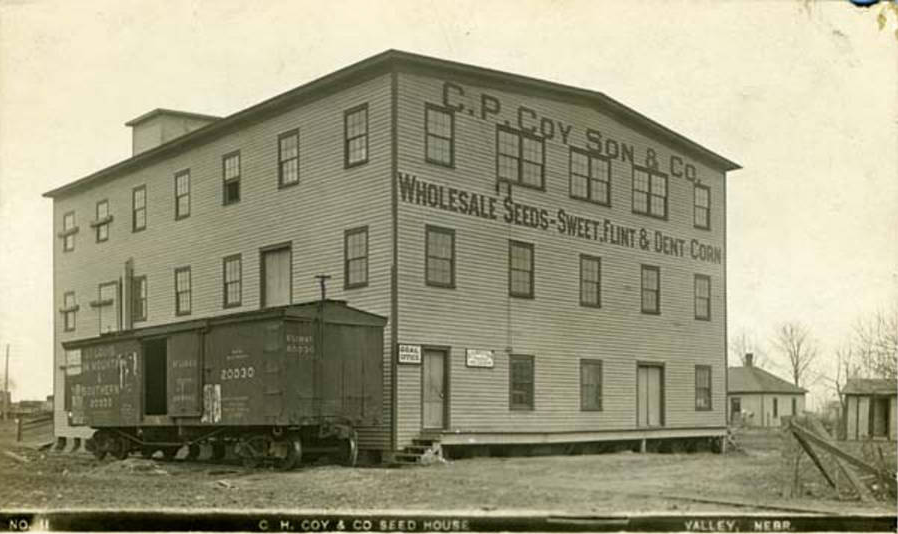
In this 5-1/2″ x 3-1/2″ black and white photograph, “C.P. Coy Son & Co. Wholesale Seeds – Sweet, Flint & Dent Corn” is painted on the front of a three-story wood frame building next to the Union Pacific Railroad tracks. A St. Louis, Iron Mountain & Southern Railroad freight car sits at the side of the building. Printed on the photograph is: “No. 11, C.P. Coy & Co seed house, Valley, Nebr.”
The Coy Seed House was an important industry for Valley, Nebraska. The building built in 1903 was one of the largest seed houses in the country. Many kinds of seeds were packaged and sold around the country, including beans, corn and pumpkin. The seed packets were sold in hardware stores, grocery stores and nurseries. In later years, the building became the Midwest Popcorn Company. In 1947, it was destroyed by fire.
This image is published and owned by the Valley Public Library. The Friends of the Valley Public Library, Valley, Nebraska, have digitized and described a collection of photographs depicting businesses and members of the local population between the late 1800s and 1900s in Valley.
See this collection and many more on the Nebraska Memories archive!
The Nebraska Memories archive is brought to you by the Nebraska Library Commission. If your institution is interested in participating in Nebraska Memories, see http://nlc.nebraska.gov/nebraskamemories/participation.aspx for more information.
Friday Reads & BookFace Friday: “Frankie” by Graham Norton
You’ll want to get to know this #BookFace!
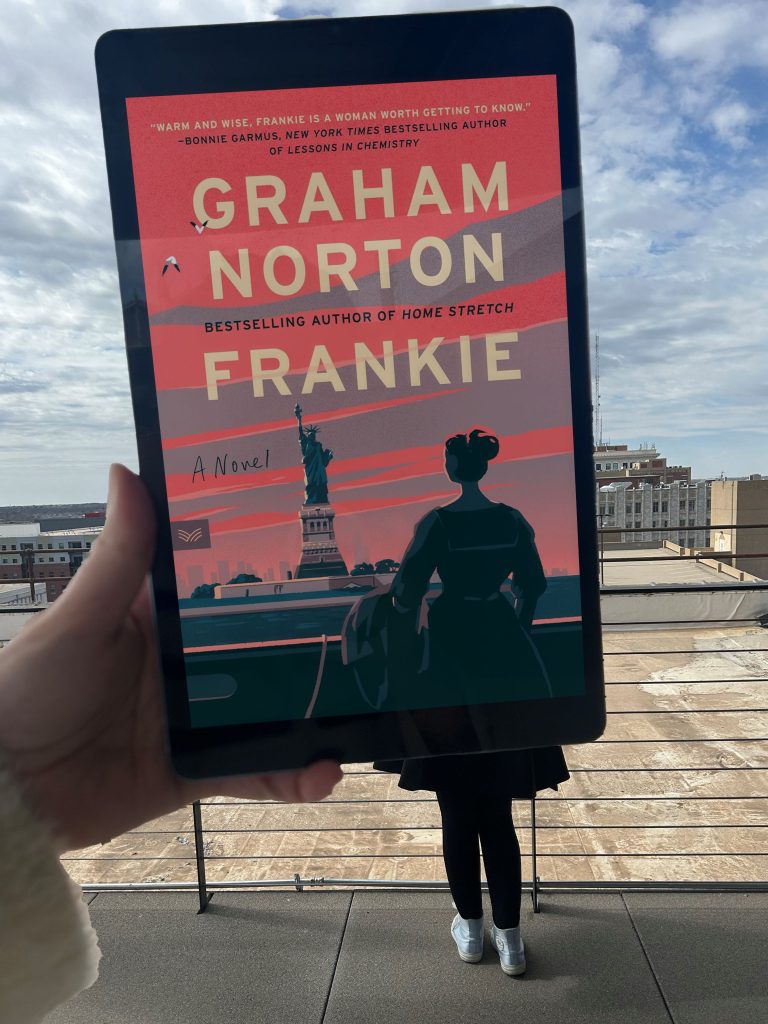
I am always interested in anything Graham Norton writes and when his fifth audio book of fiction was released with Norton’s narration, I saved it for a long weekend of listening. Graham often sets his books in Ireland but this book expands to London and New York City following the very full life of the title character from age 10 to her 80s. The story begins with Irish born Frankie recovering from an injury with the assistance of a home health care worker named Damian in her London flat. Damian is also Irish and the two enjoy an easy rapport. Frankie’s home is filled to the brim with souvenirs and boxes of memorabilia that provide easy conversation starters. As Frankie tells the stories of her past, both listeners benefit therapeutically. In one poignant moment, Frankie asks Damian if his heart has ever been broken. His answer is naive and honest, even more so given Frankie’s history. Frankie regains her mobility and Damian departs for other assignments but not until they celebrated their newfound friendship.
I found myself talking about this book to my reader friends but never did I say, this could be something they might like to read. The Irish authors I’ve read have a definite tone to their work. It’s pragmatic and practical. The characters know that if life is going smoothly, they ought to appreciate it because it will all come to an end sooner rather than later. There are moments of great passion and love in Frankie’s life, but also tragedy and heartbreak. It’s the unequal ratio toward more sadness that makes it Irish fiction in my opinion and that can be a tough sell. Even so, I will continue to read Norton’s works because he is a brilliant storyteller and narrator. This was my favorite of Graham’s novels and I missed Frankie for days after I finished the book.
Norton, Graham. Frankie. HarperVia, 2025.
Love this #BookFace or #FridayReads? Check out our past posts on the Nebraska Library Commission’s Facebook page!
Posted in Books & Reading, Friday Reads, General
Tagged bookface, bookfacefriday, Frankie, Friday Reads, Graham Norton
Leave a comment
Discovering State Docs: “Take Up the Apple”
“At the annual meeting of the Society, held in January, 1893, the Secretary recommended that the plan of issuing the reports of the Society as monographs be adopted. This contemplated issuing a series of four or five volumes, each of which should be devoted, largely, to one topic. The Society accepted the suggestion, and instructed the officers to prepare a program for the next annual meeting which should take up the apple and treat it as fully as available material would allow. This volume is the result.
At the meeting of which this is a record a resolution was adopted taking the grape, and such other of the small fruits as can be treated
in the same volume, as the topic for the next winter’s meeting.
With no precedent for guidance it was no easy matter to get together just what would make the best sort of a report on a single fruit, and the result is by no means perfect. No one realizes this more than those who have had the work in hand.” (Excerpt from the preface of the Annual Report of the Nebraska State Horticultural Society for the year 1894.)
This document is just one of the thousands of historical annual reports (1870s through 1956) from Nebraska state government agencies that are available in the Nebraska Public Documents database. This free and publicly-accessible collection is result of a collaborative digitization effort between the Nebraska Library Commission, the University of Nebraska-Lincoln, the University of Nebraska-Omaha, and the Nebraska State Historical Society. (Read more about the project here!)
Historical government documents provide a glimpse into how our Nebraska forebears lived, worked, and governed. Primary sources such as the ones found in the Nebraska Public Documents database help researchers, students, and the general public understand the important issues and events of the day, and what motivated our elected officials to make decisions and the impacts those choices made. Take a look – what will you discover?
Posted in General, Information Resources, Preservation, What's Up Doc / Govdocs
Tagged annual reports, apples, digitization, Government documents, historical documents, Horticultural Society, Nebraska Public Documents, Nebraska Publications Clearinghouse, primary sources, state documents
Leave a comment
Throwback Thursday: Bandstand in Hanscom Park
Enjoy the sunshine this #ThrowbackThursday!

Dated around 1907, this black and white photograph pictures a portable bandstand that has been assembled on the grass at Hanscom Park, located at 3201 Woolworth Avenue in Omaha, Nebraska. The bandstand has wheels underneath, so that it can be transported easily. There are chairs and lamps on the surface of the bandstand. Many trees can be seen in the background
This image is published and owned by the Omaha Public Library. They have a large collection of 1,100+ postcards and photographs of the Omaha area.
See this collection and many more on the Nebraska Memories archive!
The Nebraska Memories archive is brought to you by the Nebraska Library Commission. If your institution is interested in participating in Nebraska Memories, see http://nlc.nebraska.gov/nebraskamemories/participation.aspx for more information.
Friday Reads: “The Berry Pickers: A Novel” by Amanda Peters
This historical fiction novel set in 1960s New England follows two families whose paths cross alongside a dirt road and are then forever entwined. Joe and his family are Mi’kmaq, they travel down from Nova Scotia every year to work the berry fields of Maine. His day begins as any other but when he fails to keep an eye on his four year old sister Ruthie, he will spend the rest of his life trying to atone for her disappearance.
Norma has grown up in a sheltered and isolated suburban home with a mother that always seems afraid to let her out of her sight. She doesn’t remember much of her early childhood, but her parent’s distress when she asks about it or mentions her imaginary friend Ruthie has taught her to keep questions to herself. As she grows up her assumption that she’s adopted, and her parents never wanted to tell her will be shaken by a more awful truth. The Berry Pickers follows the aftermath of one family’s tragedy and another’s sins as both try to move forward after the loss of a child. Peter’s weaves these two dramatically different family stories together, exploring themes of family, guilt, and identity. It was the winner of the Andrew Carnegie Medal for Excellence in Fiction, and the 2024 selection for One Book One Lincoln by Lincoln City Libraries.
Peters, Amanda. The Berry Pickers: A Novel. Catapult. 2023.
Posted in Books & Reading, Friday Reads, General
Tagged Alex Michaelides, Book Review, books, Friday Reads, Novel, Reading, The Maidens
Leave a comment
#BookFaceFriday “Catherine the Great: Portrait of a Woman” by Robert K. Massie
It’s the reign of #BookFaceFriday!
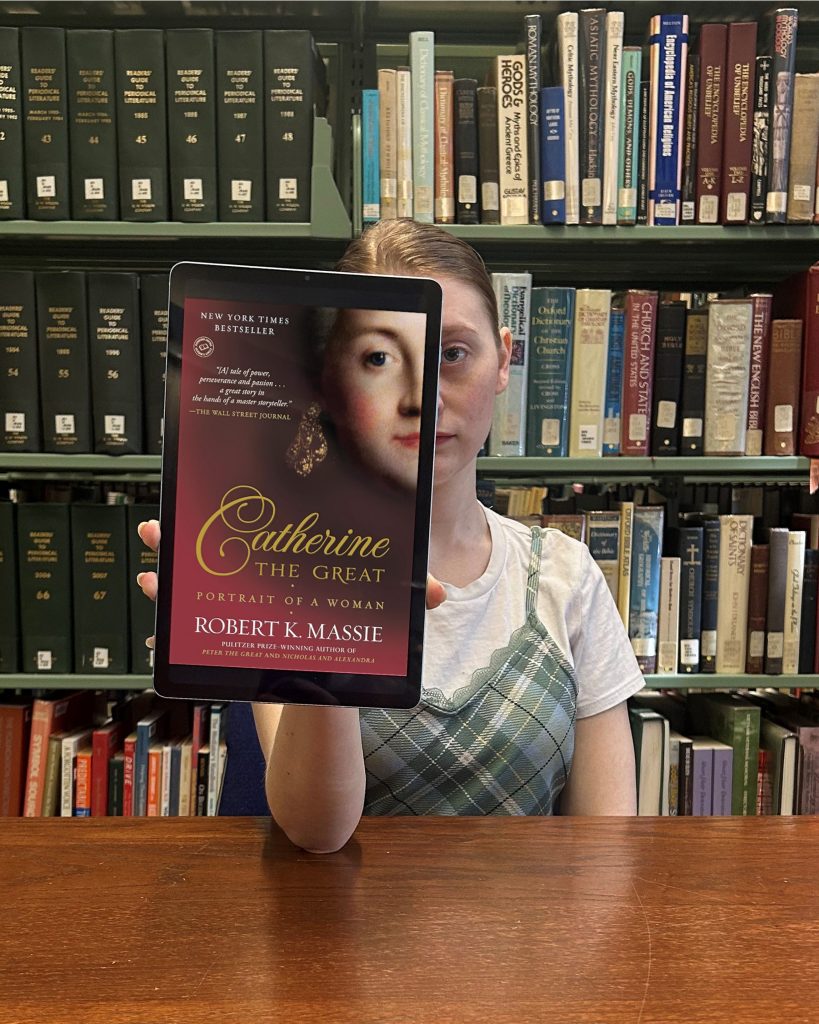
Happy Woman’s History Month! “Catherine the Great: Portrait of a Woman” by Robert K. Massie (Random House Trade Paperbacks, 2012) is a narrative biography that delves into the story and history of Catherine the Great.
It’s available as an eBook and Audiobook through Nebraska OverDrive Libraries and is currently featured in the “Woman’s History” curated collection, along with many other novels highlighting woman throughout history.“[A] meticulously detailed work about Catherine and her world. . . . Massie makes Catherine’s story as gripping as that of any novel. His book does full justice to a complex and fascinating woman and to the age in which she lived.”
— Historical Novels Review
Libraries participating in the Nebraska OverDrive Libraries Group currently have access to a shared and growing collection of digital downloadable audiobooks and eBooks. 194 libraries across the state share the Nebraska OverDrive collection of 26,898 audiobooks, 36,794 ebooks, and 5,133 magazines. As an added bonus it includes 130 podcasts that are always available with simultaneous use (SU), as well as SU ebooks and audiobook titles that publishers have made available for a limited time. If you’re a part of it, let your users know about this great title, and if you’re not a member yet, find more information about participating in Nebraska Overdrive Libraries!
Love this #BookFace & reading? We suggest checking out all the titles available for book clubs at http://nlc.nebraska.gov/ref/bookclub. Check out our past #BookFaceFriday photos on the Nebraska Library Commission’s Facebook page!
Throwback Thursday: Immanuel Nursing School Basketball Players
March Madness is upon us #ThrowbackThursday!
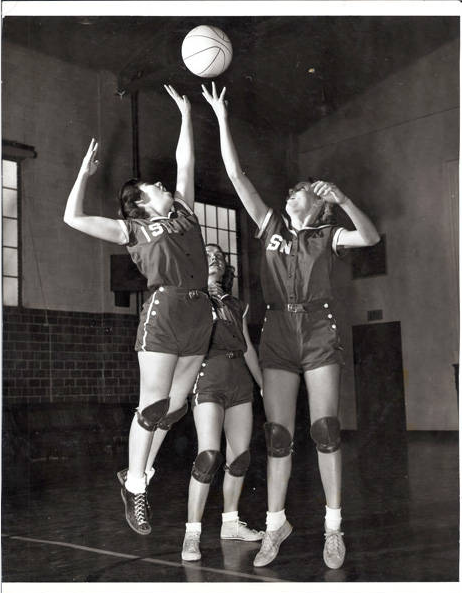
In this black and white photograph, three team members of the Immanuel Deaconess Institute’s School of Nursing Basketball Team perform a jump shot on the basketball court in Bloom Hall. They are wearing basketball uniforms, knee pads, and sneakers. The letters “ISN” can be seen on the players’ shirts. This picture was taken in Bloom Hall, which was constructed in 1937 for the School of Nursing Athletics.
This image is published and owned by the Alegent Health Immanuel Medical Center, located in Bellevue, Nebraska. They have a mission to preserve, collect, display, and document objects and records related to the history of Sarpy County.
See this collection and many more on the Nebraska Memories archive!
The Nebraska Memories archive is brought to you by the Nebraska Library Commission. If your institution is interested in participating in Nebraska Memories, see http://nlc.nebraska.gov/nebraskamemories/participation.aspx for more information.
Big Talk From Small Libraries 2025 Recordings Now Available
Recordings of all Big Talk From Small Libraries 2025 sessions are now available!

You will find the recordings and presentations on the 2025 Recordings & Presentations page.
Don’t forget to complete the conference Evaluation! We’re looking for input from people who attended the live conference and watched the archived recordings.
And mark your calendars now – Big Talk From Small Libraries will be back in 2026! Next year’s conference will be on Friday, February 27, 2026!
#BookFaceFriday “Very Bad at Math” by Hope Larson
You can always count on #BookFaceFriday!
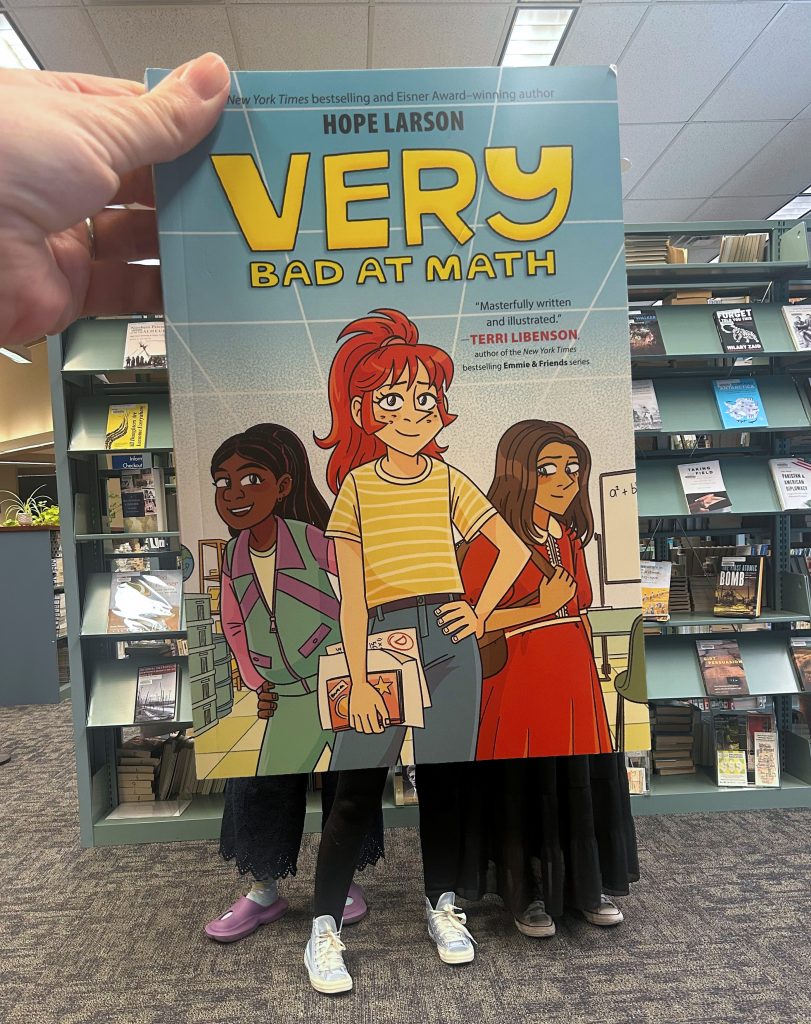
Everything is adding up! This week’s #BookFace, “Very Bad at Math” by New York Times bestselling and Eisner Award–winning author Hope Larson (HarperAlley, 2025) is a colorful middle grade graphic novel. Verity “Very” Nelson can do it all, except math! All seems lost until a teacher helps her discover the truth: Verity has dyscalculia, a learning disability that causes her to mix up numbers.
“Graphic novelist Larson has aimed her latest story at middle-grade readers who…will make a lot of readers feel seen. A solid addition.”
—Booklist
The Nebraska Library Commission receives a large number of children’s and young adult books sent to us as review copies from book publishers. When our Children and Young Adult Library Services Coordinator, Sally Snyder, is done with them, the review copies are available for the Library System Directors to distribute to school and public libraries in their systems. You can see some of her favorites of the past year in the recent NCompass Live webinar episodes: Best Teen Reads of 2024 and Best Children’s Books of 2024.
Love this #BookFace & reading? Check out our past #BookFaceFriday photos on the Nebraska Library Commission’s Facebook page!
Throwback Thursday: Agnes and Christina Hilger
It’s a beautiful #ThrowbackThursday!
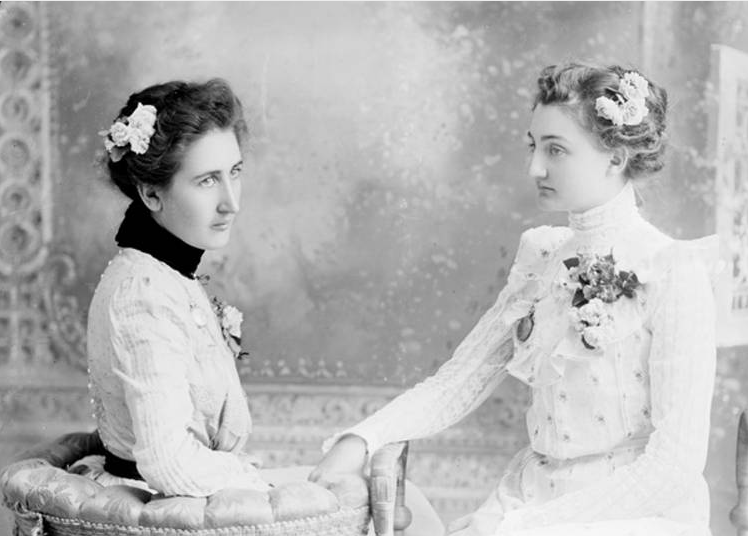
A 4″x6″ glass plate negative, portrait photograph of Agnes and Christina Hilger, from David City, Nebraska. Agnes and Christina Hilger were the two youngest daughters of John and Florence Hilger. Agnes was born in Missouri, July 1881. Agnes married Allen B. Smith. Christine was born in Missouri, September 23, 1877, and died May 25, 1968, in David City, Nebraska, where she is buried in St. Mary’s cemetery.
This image is published as part of the Boston Studio Project collection, and is owned by both them and the Thorpe Opera House Foundation. The Boston Studio Collection consists of over 68,000 negatives that record life in and around David City, Nebraska from 1893 to 1979.
See this collection and many more on the Nebraska Memories archive!
The Nebraska Memories archive is brought to you by the Nebraska Library Commission. If your institution is interested in participating in Nebraska Memories, see http://nlc.nebraska.gov/nebraskamemories/participation.aspx for more information.
Microsoft is discontinuing Publisher!
Microsoft announced it is discontinuing Publisher in October 2026! Is anyone still using it? Most all of the libraries I’ve worked at/with use Canva for their flyers and handouts these days. If you own Office Standard, you will be able to continue to use the Publisher app it came with. If you have an Office365 subscription, you will lose access to Publisher.
If you were or are an Office365 Publisher user, Microsoft recommends converting your *.pub files by opening and saving them as Adobe *.pdf files before the October 2026 EOL (End-of-Life). Unfortunately, you will lose the ability to easily edit the converted *.pdf file using this method. I did some experimenting and LibreOffice Draw is a good alternative if you have Office365 and Publisher files you want to continue working with past the Publisher October 2026 EOL.
Andrew “Sherm” Sherman
Library Technology Support Specialist
#BookFaceFriday “The Dream Lover” by Elizabeth Berg
#BookFaceFriday come rescue me!
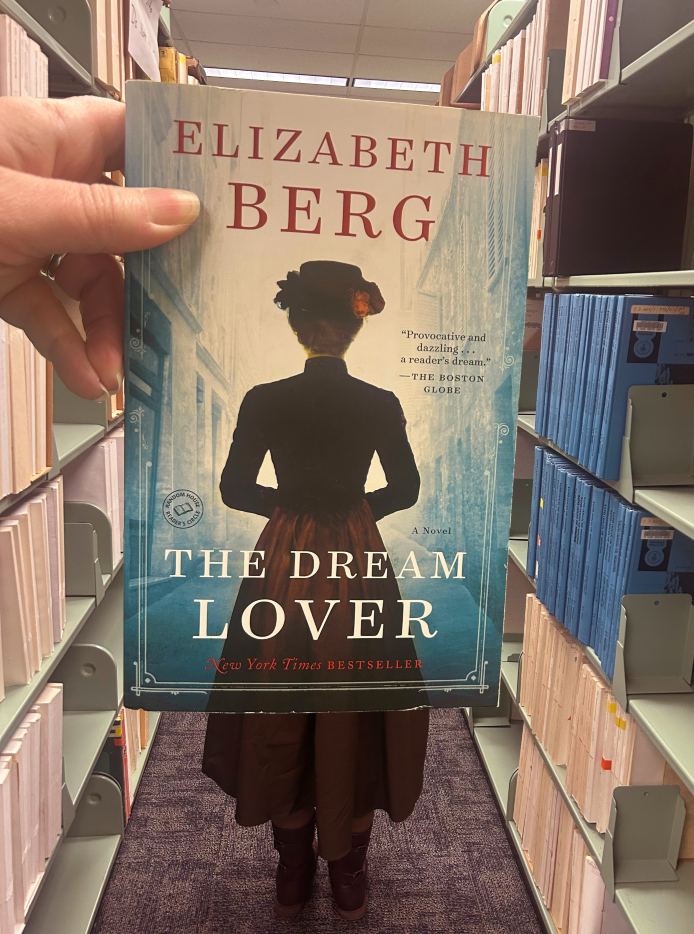
This #BookFaceFriday is a dream come true! At the beginning of “The Dream Lover” by Elizabeth Berg (Ballantine Books; Reprint edition; 2016), Aurore Duplin is leaving her estranged husband and life behind to move to Paris and pursue her dream of becoming a writer under the new name of George Sand.
We have 3 copies for your reading group to borrow in our Book Club Kit collection, and you can also find it in ebook format in the Nebraska OverDrive Libraries.“Fantastic . . . a provocative and dazzling portrait . . . Berg tells a terrific story, while simultaneously exploring sexuality, art, and the difficult personal choices women artists in particular made—then and now—in order to succeed. . . . The book, imagistic and perfectly paced, full of dialogue that clips along, is a reader’s dream.”
— The Boston Globe
Book Club Kits Rules for Use
- These kits can be checked out by the librarians of Nebraska libraries and media centers.
- Circulation times are flexible and will be based upon availability. There is no standard check-out time for book club kits.
- Please search the collection to select items you wish to borrow and use the REQUEST THIS KIT icon to borrow items.
- Contact the Information Desk at the Library Commission if you have any questions: by phone: 800/307-2665, or by email: Information Services Team
Libraries participating in the Nebraska OverDrive Libraries Group currently have access to a shared and growing collection of digital downloadable audiobooks and eBooks. 194 libraries across the state share the Nebraska OverDrive collection of 26,898 audiobooks, 36,794 ebooks, and 5,133 magazines. As an added bonus it includes 130 podcasts that are always available with simultaneous use (SU), as well as SU ebooks and audiobook titles that publishers have made available for a limited time. If you’re a part of it, let your users know about this great title, and if you’re not a member yet, find more information about participating in Nebraska Overdrive Libraries!
Love this #BookFace & reading? Check out our past #BookFaceFriday photos on the Nebraska Library Commission’s Facebook page!
Throwback Thursday: Annual Traffic Report
Pull over, it’s #ThrowbackThursday!
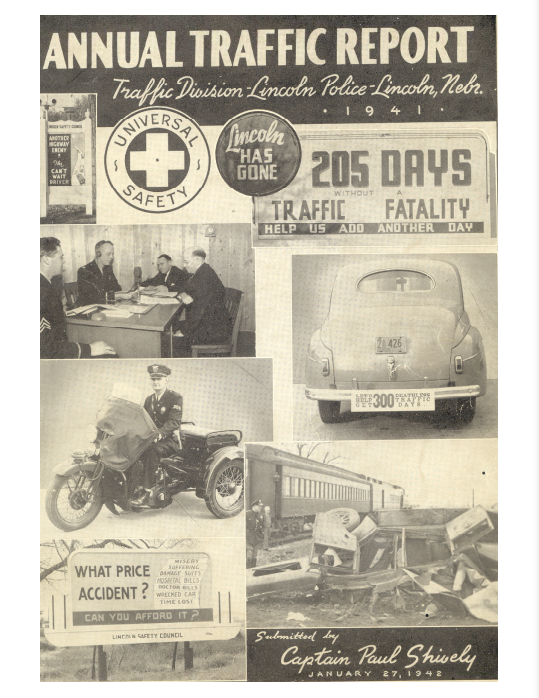
This is the cover of a 35 page annual report booklet from 1941, containing statistical information from the Lincoln Police Department, Traffic Division. The report has 37 tables which include the following information: review of 1941 traffic fatalities, total traffic accidents, persons injured, violations, condition of driver, type of motor vehicle, road and weather conditions, and moving violations.
This image is published and owned by the Lincoln Police Department. Their collection includes digitized images of police officers from 1885-1907 and department annual reports from 1942-1973.
See this collection and many more on the Nebraska Memories archive!
The Nebraska Memories archive is brought to you by the Nebraska Library Commission. If your institution is interested in participating in Nebraska Memories, see http://nlc.nebraska.gov/nebraskamemories/participation.aspx for more information.
Book Briefs: New University of Nebraska Press Books at the Nebraska Publications Clearinghouse
The Nebraska Publications Clearinghouse receives documents every month from all Nebraska state agencies, including the University of Nebraska Press (UNP). UNP books, as well as all Nebraska state documents, are available for checkout by libraries and librarians for their patrons.
Here are the UNP books the Clearinghouse received in January and February, 2025:
The Complete Letters of Henry James, 1888-1891, Volume 1, by Henry James, edited by Michael Anesko, et al. Series: The Complete Letters of Henry James
This first volume in The Complete Letters of Henry James, 1888–1891 contains 171 letters, of which 119 are published for the first time, written from late November 1888 to April 20, 1890. These letters continue to mark Henry James’s ongoing efforts to care for his sister, develop his work, strengthen his professional status, build friendships, engage with timely political and economic issues, and maximize his income, which included hiring an agent. James details his work on The Tragic Muse, “Mrs. Temperly,” “An Animated Conversation,” “The Solution,” and other fiction. This volume opens with James in France and concludes with James on the Continent. Dee MacCormack introduces the volume, paying close attention to James’s increasing interest in the theater.
Men of God : Medicant Orders in Colonial Mexico, by Asunción Lavrin. Series: Confluencias
A broadly researched cultural history, Men of God offers a path to understanding the concept of religious masculinity through an intimate approach to the study of friars and lay brothers in colonial Mexico. Though other scholars have focused on the missionary work of the Augustinian, Franciscan, and Dominican friars, few have addressed their everyday lives and how the internal discipline of their orders shaped them. In Men of God Asunción Lavrin offers a sweeping yet intimate history of the mendicant friars in New Spain from the late sixteenth through the eighteenth centuries.
Focusing on these individuals’ lives from childhood through death, Lavrin explores contemporaneous ideas, from how to raise a boy to the friars’ training as novices, and the similarities and differences in the life experiences of lay brothers and ordained members. She discusses their sexuality to reveal the challenges and failures of religious manhood, as well as the drive behind their missionary duties, especially in the late seventeenth through the eighteenth centuries. Men of God also explores the concepts and realities of martyrdom and death, significant elements in the spirituality of the mendicant friars of colonial Mexico.
Of Corn and Catholicism : a History of Religion and Power in Pueblo Indian Patron Saint Feast Days
In Of Corn and Catholicism Andrea Maria McComb Sanchez examines the development of the patron saint feast days among Eastern Pueblo Indians of New Mexico from the seventeenth century to the late nineteenth century. Focusing on the ways Pueblo religion intertwined with Spanish Catholicism, McComb Sanchez explores feast days as sites of religious resistance, accommodation, and appropriation. McComb Sanchez introduces the term “bounded incorporation” to conceptualize how Eastern Pueblo people kept boundaries flexible: as they incorporated aspects of Catholicism, they changed Catholicism as well, making it part of their traditional religious lifeway.
McComb Sanchez uses archival and published primary sources, anthropological records, and her qualitative fieldwork to discuss how Pueblo religion was kept secret and safe during the violence of seventeenth-century Spanish colonialism in New Mexico; how Eastern Pueblos developed strategies of resistance and accommodation, in addition to secrecy, to deal with missionaries and Catholicism in the eighteenth and early nineteenth centuries; how patron saint feast days emerged as a way of incorporating a foreign religion on the Pueblos’ own terms; and how, by the later nineteenth century, these feast days played a significant role in both Pueblo and Hispano communities through the Pueblos’ own initiative.
Unsettling Cather, by Marilee Lindemann and Ann Romines. Series: Cather Studies, Volume 14
American author Willa Cather was born and spent her first nine years in the Shenandoah Valley of Virginia. Here, as an observant daughter of a privileged white family, Cather first encountered differences and dislocations that remained lively, productive, and sometimes deeply troubling sites of tension and energy throughout her writing life.
The essays in Cather Studies, Volume 14 seek to unsettle prevailing assumptions about Cather’s work as she moved from Virginia to Nebraska to Pittsburgh to New York City to New Mexico and farther west, and to Grand Manan Island. The essays range from examinations of how race shapes and misshapes Cather’s final novel, Sapphira and the Slave Girl, to challenges to criticisms of her 1935 novel, Lucy Gayheart. Contributors also frame fresh discussions of Cather’s literary influences and cultural engagements in the first decade of her career as a novelist through the lens of sex and gender and examine Cather’s engagements with region as a geopolitical, sociolinguistic, and literary site. Together, the essays offer compelling ways of seeing and situating Cather’s texts—both unsettling and advancing Cather scholarship.
**Pictures and Synopses courtesy of University of Nebraska Press.
What’s Up Doc? New State Agency Publications at the Nebraska Library Commission
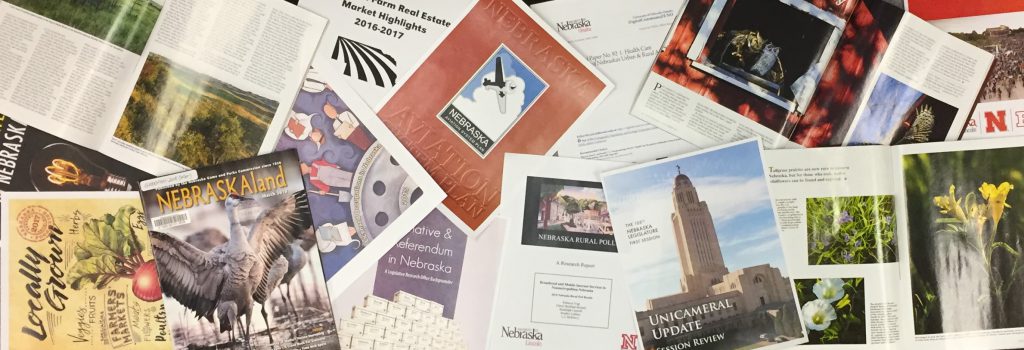
New state agency publications have been received at the Nebraska Library Commission for January and February, 2025. Included are reports from the Nebraska Auditor of Public Accounts, the Nebraska’s Coordinating Commission for Postsecondary Education, the Nebraska Department of Environment and Energy, various Nebraska Legislative Committees, and titles from University of Nebraska Press, to name a few.
With the exception of the University of Nebraska Press titles, items are available for immediate viewing and printing by clicking directly in the .pdf below. The University of Nebraska Press titles can be checked out by librarians for their patrons here: Online Catalog.
The Nebraska Legislature created the Nebraska Publications Clearinghouse in 1972 as a service of the Nebraska Library Commission. Its purpose is to collect, preserve, and provide access to all public information published by Nebraska state agencies. By law (State Statutes 51-411 to 51-413) all Nebraska state agencies are required to submit their published documents to the Clearinghouse. For more information, visit the Nebraska Publications Clearinghouse page, contact Aimee Owen, Government Information Services Librarian; or contact Bonnie Henzel, State Documents Staff Assistant.
Posted in Books & Reading, Education & Training, General, Information Resources, What's Up Doc / Govdocs
Tagged books, GovDocs, Reading
Leave a comment

